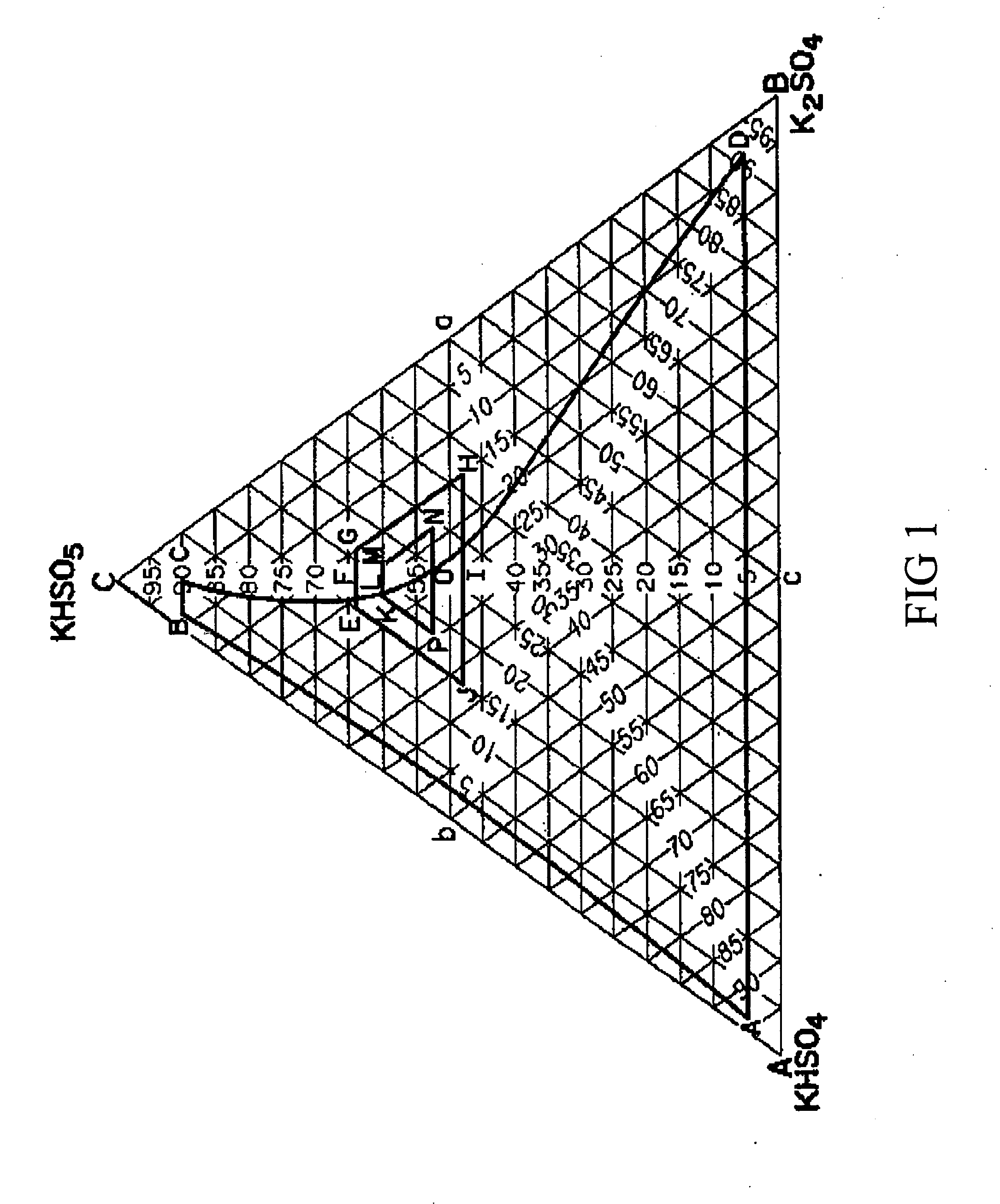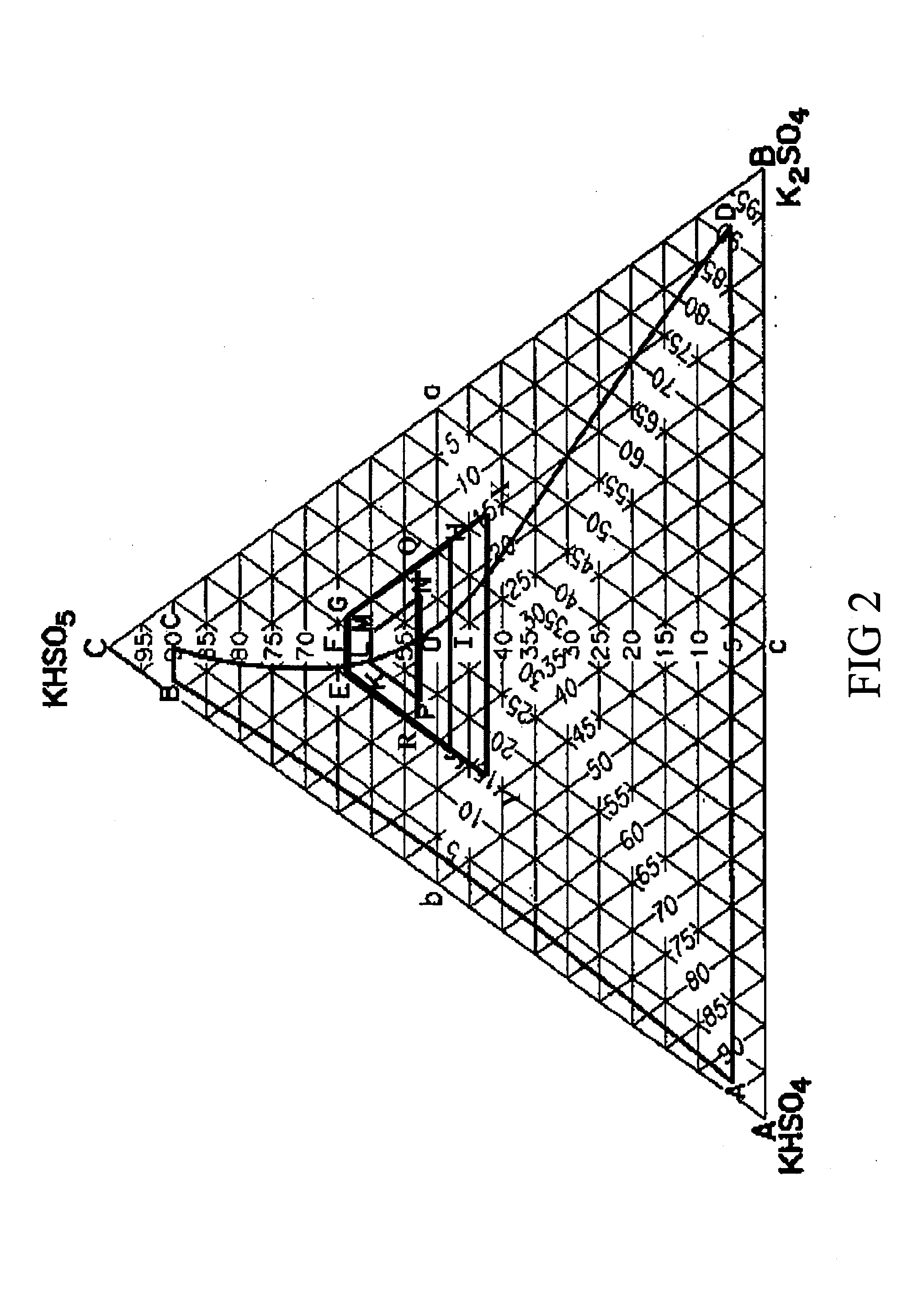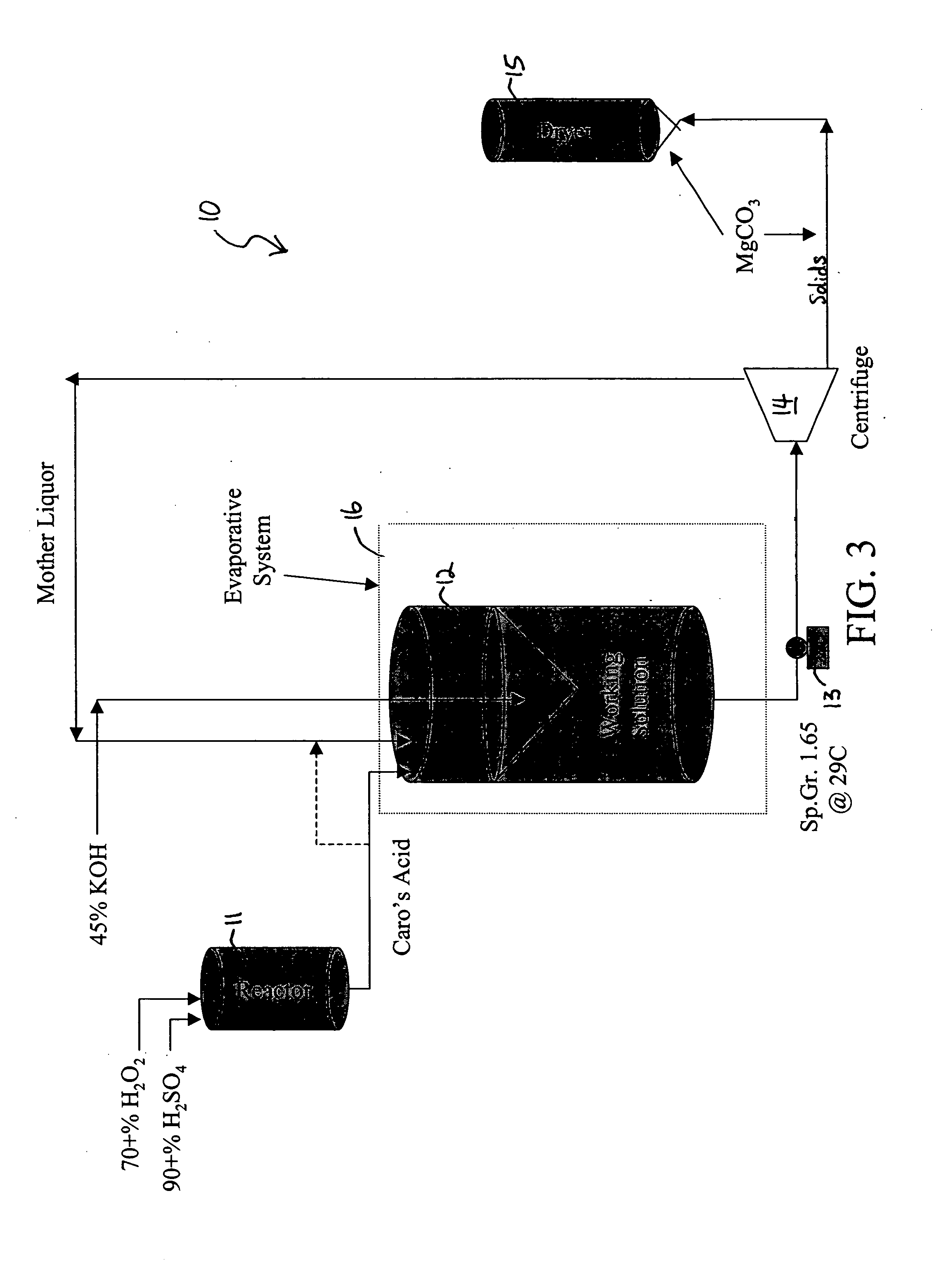Production of potassium monopersulfate triple salt using oleum
a technology of potassium monopersulfate and oleum, which is applied in the direction of inorganic chemistry, chemical instruments and processes, detergent compositions, etc., can solve the problems of pmps's limited utility, strong oxidation potential of pmps, and use of pmps
- Summary
- Abstract
- Description
- Claims
- Application Information
AI Technical Summary
Problems solved by technology
Method used
Image
Examples
embodiment 1
The Caro's acid composition resulting from controlling the order of reactant addition (i.e., H2O2 to H2SO4) and thereby obtaining a supra-stoichiometric to stoichiometric ratio of H2SO4 to H2O2, results in a higher active oxygen content from H2SO5. The resulting Caro's acid solution can be stabilized to maintain a high H2SO5 concentration. By reducing the reverse reaction between H2SO5 and H2O, a Caro's acid solution is produced which, upon partial neutralization with an alkali potassium, produces a PMPS triple salt having a K / S ratio of between 1.15 to 1.25. Such PMPS triple salt has an active oxygen higher than that of PMPS triple salt made with conventional methods, and does hot suffer from the drawbacks of K2S2O8 formation.
Upon slow continuous or incremental addition of H2O2 and / or Caro's acid solution to H2SO4 under a temperature at or below 20° C., the rate of the forward reaction is initially high due to the excess H2SO4 and low H2O concentration. With continued addition o...
first example of embodiment 1
1. First Example of Embodiment 1
28.54 g of 70% H2O2 (approx. 0.59 mol H2O2) was added drop-wise to 60.02 g of vigorously agitated 93% H2SO4 (approx. 0.57 mol H2SO4) while controlling the temperature with an ice / brine solution between 5-8° C. The addition took 2.5 hrs and produced a Caro's acid solution from almost a 1:1 molar ratio of H2SO4 to H2O2.
The Caro's acid solution was allowed to react with vigorous agitation for 60 minutes while the temperature was controlled between 2-5° C.
The Caro's acid solution was diluted with 47.5 g deionized H2O by addition of the Caro's acid to the water with vigorous agitation while controlling the temperature between 10-15C.
48.78 g K2CO3 was diluted with 66.98 g deionized H2O. This solution was added drop-wise to the vortex of the vigorously agitated solution of diluted caro's acid to raise the K / S ratio to 1.2. Temperature was varied between 11-17° C. Total lapsed time to complete the addition was 18 minutes.
The solution was transferred ...
second example of embodiment 1
2. Second Example of Embodiment 1
20.54 g of 76% H2O2 (approx. 0.46 mol H2O2) was slowly added to 10.02 g 98% H2SO4 (approx. 0.1 mol H2SO4).
46.67 g of 26% oleum was slowly added through a drip tube to the weak Caro's acid over a period of 1.5 hours.
The temperature was maintained at between −2 to 8° C. during both steps of the Caro's acid production.
The rich The rich Caro's acid solution was added to 47.23 g deionized H2O while controlling the temperature between 0-6° C.
48.89 g K2CO3 was diluted with 59.95 g of deionized H2O and slowly added to the vortex of the rich Caro's acid, K / S 1.18.
The solution was concentrated using evaporation techniques described in the previous examples to a thick paste. 1.02 g magnesium carbonate hydroxide pentahydrate was added, then the solids were dried.
The resulting triple salt was 6.3% A.O. and 0.0% K2S2O8.
This Example illustrates that H2O bound in the H2O2 can be effectively released by utilizing the steps of the invention, then reacte...
PUM
| Property | Measurement | Unit |
|---|---|---|
| wt. % | aaaaa | aaaaa |
| molar ratio | aaaaa | aaaaa |
| temperature | aaaaa | aaaaa |
Abstract
Description
Claims
Application Information
 Login to View More
Login to View More - R&D
- Intellectual Property
- Life Sciences
- Materials
- Tech Scout
- Unparalleled Data Quality
- Higher Quality Content
- 60% Fewer Hallucinations
Browse by: Latest US Patents, China's latest patents, Technical Efficacy Thesaurus, Application Domain, Technology Topic, Popular Technical Reports.
© 2025 PatSnap. All rights reserved.Legal|Privacy policy|Modern Slavery Act Transparency Statement|Sitemap|About US| Contact US: help@patsnap.com



